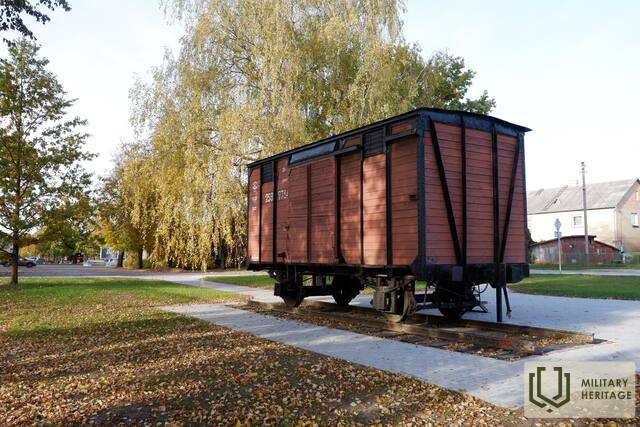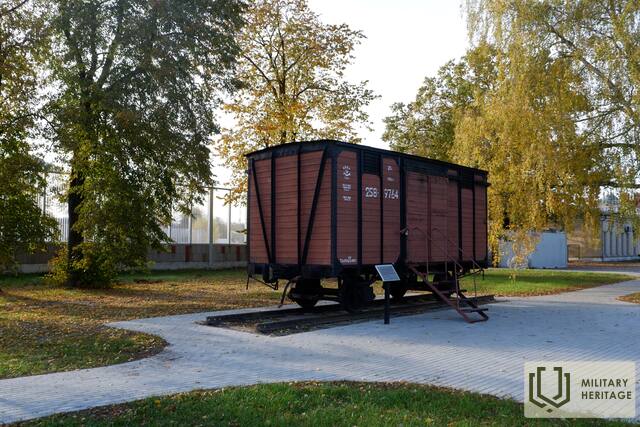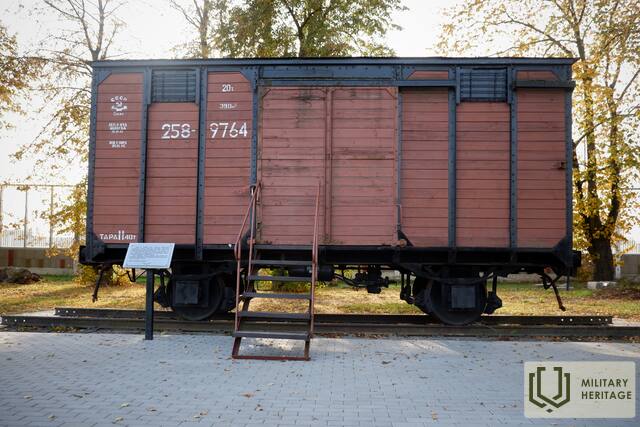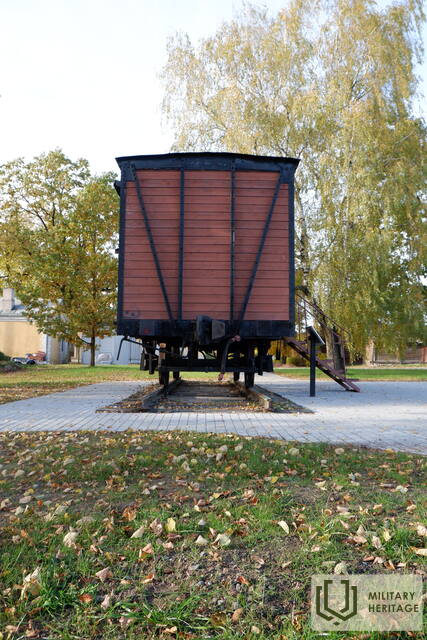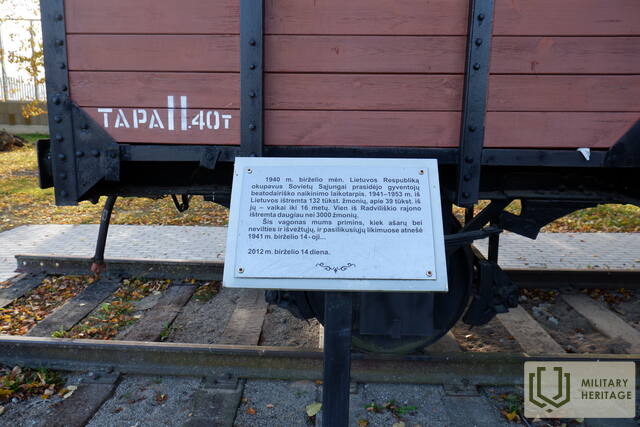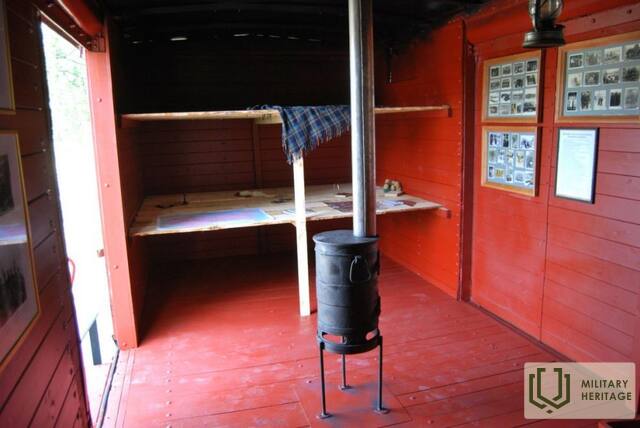Deportation train wagon Memorial site

A restored deportation train carriage is located near Radviliškis railway station as a reminder of the tragic history of the mass deportations of the inhabitants of the Republic of Lithuania
to remote areas of the Soviet Union by the Soviet occupation authorities from 1941–1952. More than 3,000 people were deported from Radviliškis alone.
In total, approximately 135,500 people were deported from Lithuania from 1941–1952. On 14 June 1941 – the first day of mass deportations in Lithuania – train carriages began to be “filled” with the inhabitants of Radviliškis and the surrounding area.
In 2012, the carriage was handed over to Radviliškis District Municipality by the Vytautas the Great Special Operations Jaeger Battalion of Lithuanian Armed Forces with the mediation of the Genocide and Resistance Research Centre of Lithuania. The authentic deportation train carriage was brought from Kaunas and carefully restored by the railwaymen, and now it houses a small exhibition.
Used sources and references:
Related timeline
Related topics
Related stories
Mokytojos Rimtautės kelias į Sibirą
Just two months after their wedding, teacher Rimtautė Jakaitienė was exiled to Siberia, along with her husband and his parents. Without trial, without charges - simply for being family.
A nine-year-old's journey into exile
Writer Regina Guntulytė-Rutkauskienė, who was exiled at the age of nine, remembers the deportation of June 14, 1941, when she and her family were taken to Siberia. Her story reveals not only the physical but also the emotional pain of exile, which accompanied her even after returning to Lithuania.
Women's work in Soviet exile
Lithuanian exiles, accustomed to traditional female roles in interwar Lithuania, faced hard physical labor and a new reality in exile, where there was no longer a distinction between "male" and "female" work.




